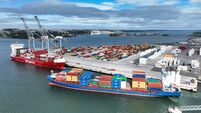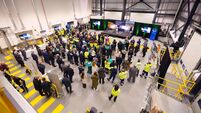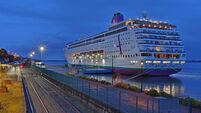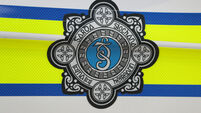Dublin Port, vital to Irish economy and an amenity cherished by the public

Dublin Port, the largest freight and passenger port in Ireland with €165bn worth of trade flowing through it annually.
Dublin Port is an extremely busy place, being the largest freight and passenger port in Ireland with €165bn worth of trade flowing through it annually. It is operated and developed by Dublin Port Company, a state owned commercial company.
As well as commerce, the port is an amenity for both locals and tourists. And it is managed in a way that is cognisant of its unique environment. The Dublin Bay UNESCO biosphere is home to wildlife and habitats. Creativity and culture thrive here too with the Pumphouse and Substation regularly hosting installations and performances by Irish and international artists while the Distributed Museum (the working title that promotes engagement with port heritage and amenity assets) reaches out into the city.
The harbour master, Captain Michael McKenna, points out that Dublin Port is critical to Ireland’s economy “with 79% of all unitised trade coming through the port. Unitised trade is what fills up the supermarkets as well as consisting of industrial parts. It’s everything we need on a daily basis. There is also the import of over 65% of the refined oils that we use.”
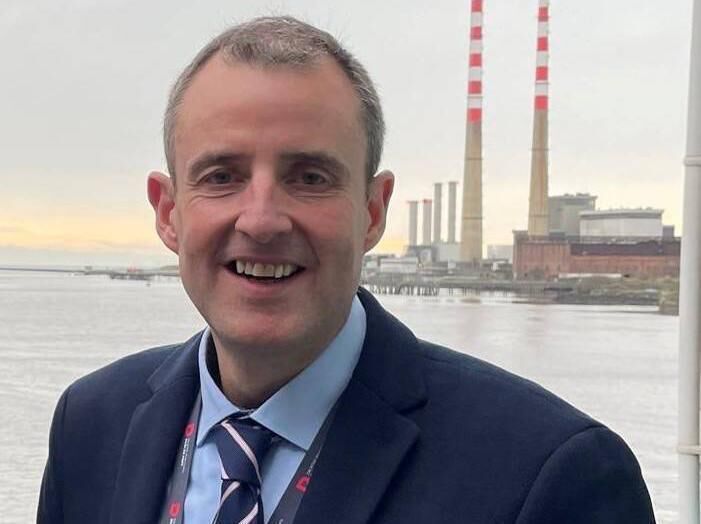
The port is also the route to market for much of our export economy and for outgoing journeys. Head of external affairs at Dublin Port Company, Claire Percy says: “Not everybody realises that Dublin Port is famous for its connection to Holyhead. We have numerous routes directly into mainland Europe and into the UK. We have daily services to France and regular services to the north of Spain as well as Antwerp and Rotterdam.”
With over 15,000 ship movements a year, the port plays a critical role in the supply chain system, keeping Dublin and the rest of the country moving forward.
Smaller in scale than the likes of Rotterdam and Barcelona ports, Captain McKenna says Dublin Port more than makes up for this.
“If you look at the throughput relating to our size and if we take one simple hectare of land here, there is twice the volume of cargo going through every hectare of land than happens in Rotterdam and Barcelona. Our levels of efficiency at Dublin Port are extremely high and are projected to double in the coming twenty to thirty years. Part of our challenge is to keep ahead with building and rebuilding our berths to make sure we can service the economic needs of the industry.”

Dublin Port Company’s Masterplan 2040 involves the construction of a new quay wall at Berth 52 East and a significant new roll-on/roll-off facility at Berth 53 to support growing freight and ferry traffic plus new technology for the safer berthing of ever larger vessels.
“It’s a safer, more reliable and stronger mooring system than the ropes and chains of old that hold ships in position. While ropes have come a long way and have very high strength, the system we’re fitting will bring a new element to safety and security of the vessel alongside the berth in the weather conditions that we have to deal with in Ireland.
“We expect to see more frequent and fiercer storms. When we look at the information that’s available on weather and climate, the building work we’re doing is in line with the predictions of sea level rise. We’re ensuring that the berth is being built at the appropriate level so that it doesn’t become overcome with water. We live by the weather.”
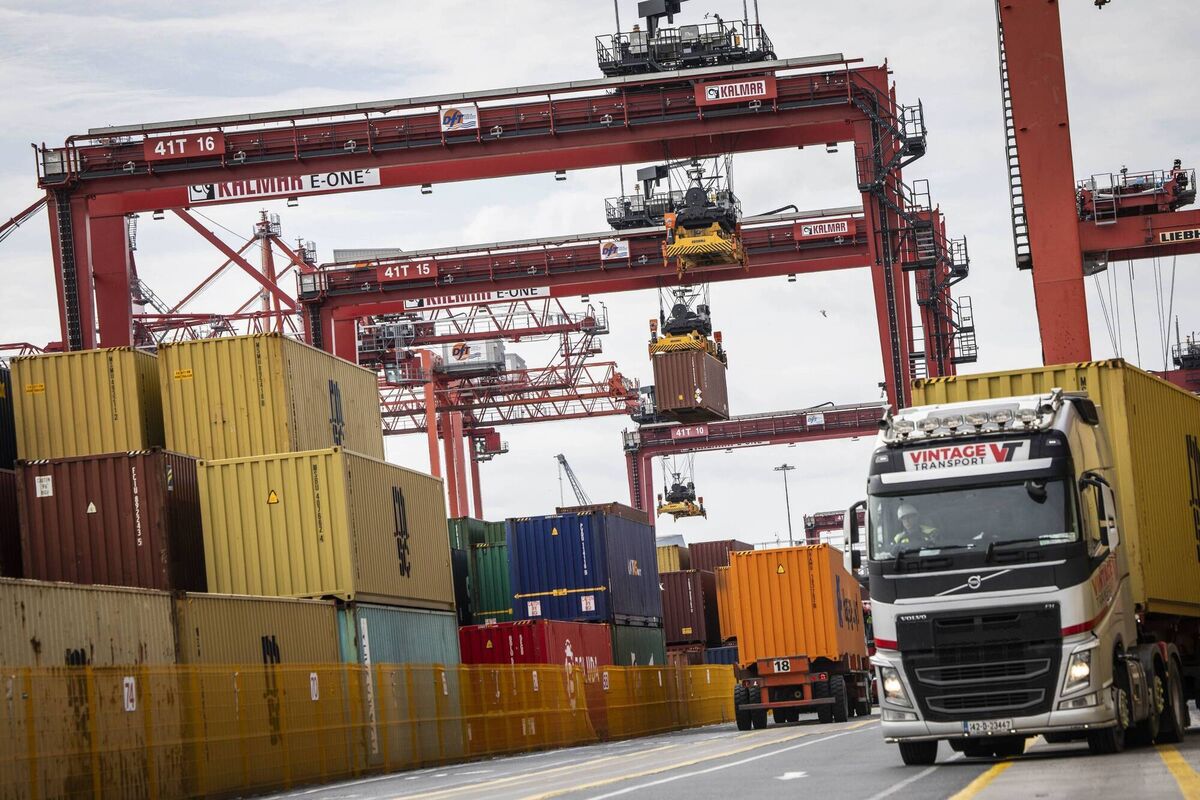
Does climate change make operations more difficult?
“What helps us in a great way is Met Eireann and the national warning systems that we have; the yellow, orange and red warnings. There has been great change in societal attitudes to that. I think people are trying their best to become more resilient and to make good decisions when they have the right information. We pass the warnings immediately to ships and the cargo terminals here. Ships coming from abroad may not be familiar with our weather systems. We’re the intermediary, the conduit, to make sure the ship captains make safe decisions based on sound information.”
There are over 160 people working for Dublin Port Company while thousands of workers (at least 4,500) from the various terminal operators and contractors are part of the port estate.
As for the public accessing the Dublin Port Tolka Estuary Greenway, since its opening in September 2024, some 300,000 people have enjoyed this amenity. It’s a 2km cycle and pedestrian path along the northern edge of Dublin Port, offering public access to previously restricted areas. It runs from Eastpoint Business Park to the ferry check-in booths and provides views of Dublin Bay, Clontarf and Howth Head. The greenway connects to the wider Dublin Coastal Trail.
Ms Percy says: “You can see completely new views over the UNESCO biosphere. At various times of the day, you can see different types of wildlife such as seals, curlews and terns. It’s a bit of a hidden gem at the moment, a 2km stretch of what will ultimately be 16km. Used for cycling and walking, it’s part of the overall tourist proposition for Dublin.
“We work closely with Fáilte Ireland on it. My own favourite feature of the Dublin Port greenway is that it’s part of a network called EuroVelo (a network of long distance cycle routes connecting the European continent). The idea behind it is that ultimately, you’ll be able to cycle off-road from Gdansk in Poland all the way over to Galway. With the Dublin Port greenway, we have delivered Ireland’s connector for this EuroVelo network.

“It means that somebody can cycle across Wales, up through France and bring their bike onto the ship. When they come to Dublin, they disembark the ferry and go straight to our greenway and out into the wider Dublin network and beyond. We have seen people do that, coming across for a weekend or longer. We’re delighted to see that in action as it really emphasises the connectivity between ourselves and the city, but also ourselves and the rest of Europe.”
The Dublin Bay Birds Project has been going on for a number of years. “We partner very closely with Bird Watch Ireland. Along the greenway, you can see all manner of birds living particularly in the Tolka Estuary. We have two pontoons, like little islands, in two strategic locations in the port where terns come to nest annually.
“They’re incredible little seabirds that are very loyal to their nesting habitat. Some are Arctic terns, some are common terns. This year, we had a sighting of a one bird that has been back and forth to the Gambia twenty-five times. It’s quite incredible. There are also Brent Geese and winter warding birds. It’s a real bird spotters’ paradise.”

The Dublin Port Company is involved with the Irish Whale and Dolphin Group. “That’s because we’re very conscious of our location in the biosphere and very attentive towards it. Our building work on the Masterplan 2040 project is environmentally-led. We feel very strongly about that.
“All of our activities are closely monitored to make sure we’re in sync with both the community on one side and with nature on the other side. We have a marine mammal observer as part of the project team. The observer is on site with the rest of the delivery team looking out for whales, dolphins and porpoises.
“If we see significant activity from those types of species, work will cease until they have moved on ... We’re delighted that the seal population in Dublin Bay is thriving. They seem to be living alongside the level of commercial activity that is going on.”
A perfect combination.





